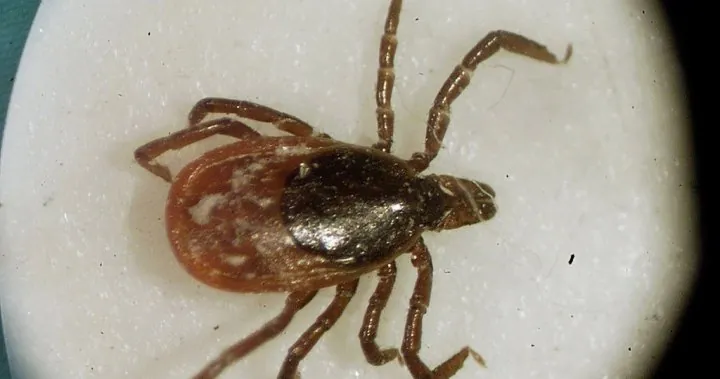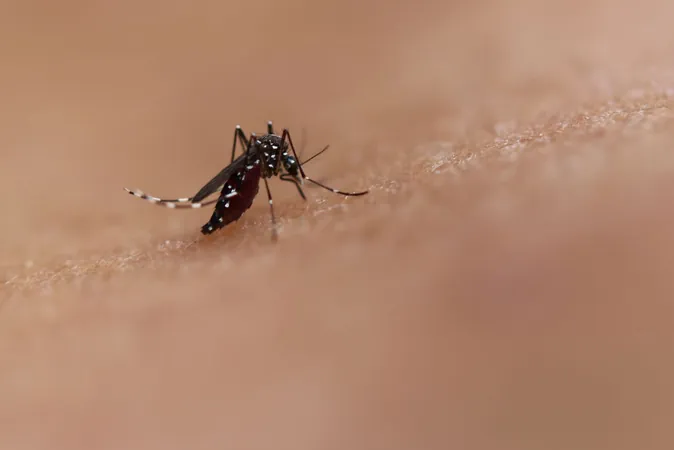
Rise of Tick-Borne Illnesses: The Alarming Connection with Climate Change
2025-06-28
Author: William
As climate change continues to reshape our planet, public health experts are sounding the alarm about the surge in Lyme disease and other tick-borne illnesses. The warmer climate is creating a fertile ground for these parasites to thrive, especially in Canada, where the effect is particularly pronounced.
Canada: A Hotspot for Ticks
Heather Coatsworth, chief of field studies at the National Microbiology Laboratory in Winnipeg, emphasizes that climate change is accelerating at an alarming pace in Canada compared to the rest of the world. Ticks, those eight-legged creatures, require specific heat and humidity levels to survive and reproduce. Regions like Ontario, Quebec, and Nova Scotia have long been considered hotspots for blacklegged ticks, the carriers of various diseases, but gradually, other provinces like Manitoba, Saskatchewan, Alberta, and British Columbia are witnessing a tick population explosion.
Raising Awareness is Crucial
Janet Sperling, a bug specialist and president of the Canadian Lyme Disease Foundation, stresses the need for heightened awareness about tick-borne diseases among the public and healthcare providers. Traditionally, many doctors have been trained to dismiss Lyme disease as a risk in places like Alberta unless there’s a travel history.
A Climbing Epidemic: Lyme Disease Statistics
Lyme disease cases have skyrocketed in Canada, with public health units reporting just 144 cases in 2009. This figure is projected to jump to a staggering 5,239 in 2024. Coatsworth warns that this number could dramatically rise to half a million within the next 25 years if climate trends continue.
Identifying Lyme Disease: Know the Signs
Symptoms of Lyme disease can often mimic other illnesses, featuring fever, chills, fatigue, and muscle aches, with a characteristic bull's-eye rash being a classic sign. However, about 30% of Lyme patients don't experience a rash, making diagnosis tricky.
The Lesser-Known Tick-Borne Threats
In addition to Lyme disease, new tick-borne diseases such as anaplasmosis, babesiosis, and Powassan virus are on the rise. Anaplasmosis cases, which were once rare, surged from 10-50 cases in 2012 to over 700 last year. Symptoms may include cough, diarrhea, and abdominal pain, complicating the picture for clinicians.
Can Tick-Borne Illnesses Be Treated?
Fortunately, both Lyme disease and anaplasmosis are bacterial and treatable with antibiotics, typically doxycycline. However, babesiosis is a parasitic infection similar to malaria and requires specific anti-parasitic medications. In contrast, Powassan virus has no known treatment, and care is generally supportive.
Where to Find These Unwelcome Ticks
Blacklegged ticks can be found in wooded, grassy areas, as well as urban parks where rodent populations thrive. They hitch rides on animals and can be transported long distances by birds, spreading their reach even further.
Protect Yourself: Tips on Tick Prevention
As outdoor enthusiasts step into nature, it’s essential to take precautions. Wearing long sleeves, using bug spray, and sticking to the center of trails can help mitigate the risk of bites. A thorough tick check after outdoor activities is crucial.
What to Do If You Find a Tick
If you discover a tick on your skin, use tweezers to remove it promptly and carefully. Time is of the essence since Lyme disease can be transmitted within 24 hours after attachment, while Powassan virus risk increases significantly after just 15 minutes.
Stay Informed and Vigilant
Keep a record by photographing the tick and report it to resources like etick.ca, which offers insights on the type of tick and disease risks in the area. If you experience symptoms post-exposure, it's imperative to consult a healthcare provider.
In a rapidly changing world, awareness and education about these tick-borne illnesses are more critical than ever. The rising tide of tick populations reflects the urgent need for action against climate change and better preparedness in our healthcare systems.









 Brasil (PT)
Brasil (PT)
 Canada (EN)
Canada (EN)
 Chile (ES)
Chile (ES)
 Česko (CS)
Česko (CS)
 대한민국 (KO)
대한민국 (KO)
 España (ES)
España (ES)
 France (FR)
France (FR)
 Hong Kong (EN)
Hong Kong (EN)
 Italia (IT)
Italia (IT)
 日本 (JA)
日本 (JA)
 Magyarország (HU)
Magyarország (HU)
 Norge (NO)
Norge (NO)
 Polska (PL)
Polska (PL)
 Schweiz (DE)
Schweiz (DE)
 Singapore (EN)
Singapore (EN)
 Sverige (SV)
Sverige (SV)
 Suomi (FI)
Suomi (FI)
 Türkiye (TR)
Türkiye (TR)
 الإمارات العربية المتحدة (AR)
الإمارات العربية المتحدة (AR)